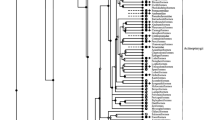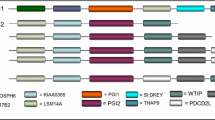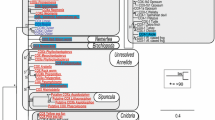Abstract.
The alcohol dehydrogenase (ADH) family has evolved into at least eight ADH classes during vertebrate evolution. We have characterized three prevertebrate forms of the parent enzyme of this family, including one from an urochordate (Ciona intestinalis) and two from cephalochordates (Branchiostoma floridae and Branchiostoma lanceolatum). An evolutionary analysis of the family was performed gathering data from protein and gene structures, exon–intron distribution, and functional features through chordate lines. Our data strongly support that the ADH family expansion occurred 500 million years ago, after the cephalochordate/vertebrate split, probably in the gnathostome subphylum line of the vertebrates. Evolutionary rates differ between the ancestral, ADH3 (glutathione-dependent formaldehyde dehydrogenase), and the emerging forms, including the classical alcohol dehydrogenase, ADH1, which has an evolutionary rate 3.6-fold that of the ADH3 form. Phylogenetic analysis and chromosomal mapping of the vertebrate Adh gene cluster suggest that family expansion took place by tandem duplications, probably concurrent with the extensive isoform burst observed before the fish/tetrapode split, rather than through the large-scale genome duplications also postulated in early vertebrate evolution. The absence of multifunctionality in lower chordate ADHs and the structures compared argue in favor of the acquisition of new functions in vertebrate ADH classes. Finally, comparison between B. floridae and B. lanceolatum Adhs provides the first estimate for a cephalochordate speciation, 190 million years ago, probably concomitant with the beginning of the drifting of major land masses from the Pangea.
Similar content being viewed by others
Author information
Authors and Affiliations
Additional information
Received: 10 April 2001 / Accepted: 23 May 2001
Rights and permissions
About this article
Cite this article
Cañestro, C., Albalat, R., Hjelmqvist, L. et al. Ascidian and Amphioxus Adh Genes Correlate Functional and Molecular Features of the ADH Family Expansion During Vertebrate Evolution. J Mol Evol 54, 81–89 (2002). https://doi.org/10.1007/s00239-001-0020-2
Issue Date:
DOI: https://doi.org/10.1007/s00239-001-0020-2




